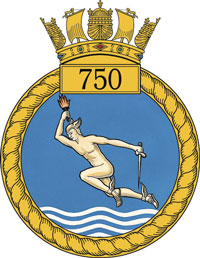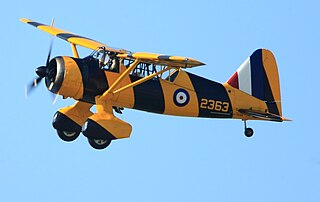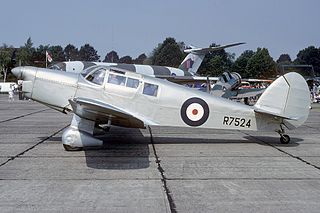
Royal Naval Air Station Lee-on-Solent,, is a former Royal Naval Air Station located near Lee-on-the-Solent in Hampshire, approximately 4 miles (6.44 km) west of Portsmouth, on the coast of the Solent.

The Royal Navy Observer School grew out of HM Naval Seaplane Training School at RNAS Lee-on-Solent as a result of a series of changes of identity and parent unit. From 1918 until 1939 the Royal Air Force was responsible for naval aviation, including training and provision of aircrew to the Royal Navy. With the return of naval aviation to the Royal Navy on 24 May 1939, the Observer School was established as 750 Naval Air Squadron of the Fleet Air Arm. During World War II the squadron moved to Trinidad to continue training aircrew. It was temporarily disbanded in October 1945. The squadron reformed in 1952 and is currently based at RNAS Culdrose, where it trains approximately 30 Royal Navy observers every year.

HM Prison Ford is a Category D men's prison, located at Ford, in West Sussex, England, near Arundel and Littlehampton. The prison is operated by His Majesty's Prison Service.

778 Naval Air Squadron was a Naval Air Squadron of the Royal Navy's Fleet Air Arm. During the Second World War the squadron was a Service Trials Unit (STU) initially based at HMS Daedalus, RNAS Lee-on-Solent, Hampshire, England before moving to HMS Condor, RNAS Arbroath, Angus, Scotland on 6 July 1940. The squadron tested all types of aircraft that could be used by the Royal Navy. Key to this was testing new types for deck landing on aircraft carriers. Such aircraft included various types of Supermarine Seafires, Grumman Hellcats, Grumman Martlets, Grumman Avengers, and Vought Corsairs. The squadron was reformed on 5 November 1951 with Douglas Skyraider AEW.1 but was disbanded on 7 July 1952 to form the basis of 849 Naval Air Squadron.

708 Naval Air Squadron was a Naval Air Squadron of the Royal Navy's Fleet Air Arm which disbanded during February 1946. It formed during October 1944 at HMS Daedalus, RNAS Lee-on-Solent, as the Firebrand Tactical Trials Unit, before moving to nearby RAF Gosport the following January. Tasked with looking into issues distinct to the Blackburn Firebrand the unit also performed deck landing training and torpedo exercises with the aircraft. The squadron moved to RNAS Ford where a number of personnel including the CO provided the core for the formation of 813 Naval Air Squadron, the Fleet Air Arm’s initial operational Blackburn Firebrand unit. The squadron relocated to RNAS Fearn at the beginning of December and then in January 1946 it moved to RNAS Rattray.

746 Naval Air Squadron was a Naval Air Squadron of the Royal Navy's Fleet Air Arm which disbanded in January 1946. It formed initially as the Naval Night Fighter Interception Unit, in November 1942 at HMS Daedalus, RNAS Lee-on-Solent. It moved to R. N. Air Section Ford in December to join the RAF Fighter Interception Unit. The squadron came under the control of the Naval Fighter Direction Centre at HMS Heron, RNAS Yeovilton, in 1943 and was tasked with the development of tactics and analysis of the experiences of pilots from the carrier squadrons. It moved to RAF Wittering in May 1944, with a detachment at RAF Defford for radar development duties. In October the squadron returned to R. N. Air Section Ford and in January 1945, deployed 'A' flight to HMS Sparrowhawk, RNAS Hatston to provide ADDL, carrier deck landing training. 746 Naval Air Squadron became the Naval Night Fighter Development Squadron in May 1945, evaluating aircraft and their equipment, while detachments of pairs of aircraft were deployed aboard escort carriers after 'A' flight became an operational sub-unit.

749 Naval Air Squadron was a Naval Air Squadron of the Royal Navy's Fleet Air Arm. It was active from 1941 through to 1945, formed as an Observer Training Squadron, as part of No.1 Observer School at RNAS Piarco ]], located 30 km (19 mi) east of Downtown Port of Spain, adjacent to the town of Piarco, on the island of Trinidad.

753 Naval Air Squadron was a Naval Air Squadron of the Royal Navy's Fleet Air Arm. It was active as an Observer Training Squadron from 1939 to 1946 as part of No. 2 Observer School, forming out of the School of Naval Co-operation RAF, in May 1939. Initially at RNAS Lee-on-Solent, the squadron moved to RNAS Arbroath just over one year later in August 1940, following a German bombing attack on the air station. It spent four years operating out of Arbroath, before relocating again, this time to RNAS Rattray, where the squadron disbanded in August 1946.

754 Naval Air Squadron was a Naval Air Squadron of the Royal Navy's Fleet Air Arm. It was active as an Observer Training Squadron from 1939 to 1944 as part of No. 2 Observer School, forming out of the School of Naval Co-operation RAF, in May 1939. It initially operated out of HMS Daedalus, RNAS Lee-on-Solent, Hampshire, however, after the Naval Air Station was attacked and bombed, it then moved to north to HMS Condor, RNAS Arbroath, Angus, Scotland, in September 1940. Here, it provided training for Observers and also Air Gunners and where four years later, in March 1944, it disbanded. The squadron then briefly reformed as a Air Gunner Training Squadron, as part of No. 1 Naval Air Gunners School, when 744 Naval Air Squadron was re-designated 754 Naval Air Squadron, in June 1944, at RN Air Section Yarmouth, Nova Scotia, Canada, until disbanding again, in March 1945.

755 Naval Air Squadron was a Naval Air Squadron of the Royal Navy's Fleet Air Arm. It was first formed as a Telegraphist Air Gunner Training Squadron from 1939 to 1944. Initially operating out of HMS Kestrel, RNAS Worthy Down, the squadron also had a brief, roughly two month stint, at RNAS Jersey, which was cut shorter than anticipated by the German occupation of France and the danger this posed to the Channel Islands. It then briefly reformed as a Communications Squadron at HMS Bherunda, RNAS Colombo Racecourse, Sri Lanka, during 1945.

756 Naval Air Squadron was a Naval Air Squadron of the Royal Navy's Fleet Air Arm. It was initially formed as a Telegraphist Air Gunner Training Squadron, operating from May to August 1939, out of RNAS Worthy Down, in Hampshire, England. It was later reformed again as a Telegraphist Air Gunner Training Squadron, operating from March 1941, out of RNAS Worthy Down. TAG training was provided until the No. 2 School was ready in Canada, opening on 1 January 1943, and 756 Naval Air Squadron disbanded in December 1942. The squadron reformed at RNAS Katukurunda, in Sri Lanka, in October 1943, as a Torpedo, Bomber, Reconnaissance pool. During 1944 and 1945, the squadron undertook a number of detachmemts on different types of Royal Navy aircraft carriers, then disbanding in December 1945.

763 Naval Air Squadron was a Naval Air Squadron of the Royal Navy's Fleet Air Arm (FAA). It formed in 1939 as the Torpedo Spotter Reconnaissance Pool No. 1, at HMS Kestrel, RNAS Worthy Down. Three months later, it moved to the short-lived RNAS Jersey, in the Channel Islands, before moving back to Worthy Down via HMS Daedalus, RNAS Lee-on Solent and disbanded in 1940. The squadron reformed, on the seaplane carrier HMS Pegasus, as a Seaplane Training Squadron, in 1942. This role lasted around two years and the squadron continually operated and provided training from HMS Pegasus, until disbanding in 1944. Roughly two months later, the squadron reformed again, this time at HMS Nightjar, RNAS Inskip, as an Anti-submarine Operational Training Squadron and remained in this role for just over one year, disbanding in July 1945.

770 Naval Air Squadron was a Naval Air Squadron of the Royal Navy's Fleet Air Arm. It last disbanded at HMS Nighthawk, RNAS Drem in October 1945. 770 Naval Air Squadron initially formed as a Deck Landing Training Squadron at HMS Daedalus, RNAS Lee-on-Solent, in November 1939. Embarked in HMS Argus, and operated from the aircraft carrier and Hyeres la Palyvestre in the south of France, until it disbanded in May 1940. It reformed at HMS Merlin, RNAS Donibristle, on New Year’s Day 1941, as a Fleet Requirements Unit out of 771 Naval Air Squadron’s 'X' Flight. It moved to HMS Jackdaw, RNAS Crail, in June 1941, then two and half years later it moved to HMS Jackdaw II, RNAS Dunino in January 1944, before finally moving to HMS Nighthawk in July.

772 Naval Air Squadron was a Naval Air Squadron of the Royal Navy's Fleet Air Arm which last disbanded during September 1995. 772 Naval Air Squadron formed as a Fleet Requirements Unit out of 'Y' Flight from 771 Naval Air Squadron at RNAS Lee-on-Solent in September 1939. While the headquarters remained there, floatplanes were operated out of RNAS Portland, however, mid 1940 saw the whole squadron move north to RNAS Campbeltown and roughly twelve months afterwards the short distance to RNAS Machrihanish. The unit moved to RNAS Ayr in July 1944 and became the Fleet Requirements Unit School. In January 1946 the squadron moved to RNAS Burscough in Lancashire, before moving to RNAS Anthorn in Cumberland, in May. It became the Northern Fleet Requirements Unit upon moving to RNAS Arbroath, in June 1947, but disbanded into 771 Naval Air Squadron in October. 772 Naval Air Squadron reformed as a Helicopter Support Squadron at RNAS Portland in September 1974. In September 1977 the squadron took over responsibility for a number of Ships' Flights of Royal Fleet Auxiliary ships. The squadron was used to reform 848 Naval Air Squadron for the Falklands Task Force in 1982, with the Ships' Flights absorbed into 847 Naval Air Squadron. In August 1982 it took on the Anti-Submarine Warfare Flight from 737 Naval Air Squadron and between 1983 - 1985 a Search and Rescue Flight operated out of RNAS Lee-on-Solent.

780 Naval Air Squadron was a Naval Air Squadron of the Royal Navy's Fleet Air Arm which last disbanded at HMS Seahawk, RNAS Culdrose in November 1949. 780 Naval Air Squadron formed at HMS Raven, RNAS Eastleigh as a Conversion Course Unit, in October 1939, to train experienced civilian pilots in naval flying. It moved to HMS Daedalus, RNAS Lee-on-Solent, in October 1940, and later, its role had changed to converting pilots to Fairey Barracuda aircraft. It spent a year at RNAS Charlton Horethorne, before returning to HMS Daedalus and disbanded, early 1945. In March 1946, the squadron reformed at HMS Godwit, RNAS Hinstock, as the Naval Advanced Flying School, to give flying instructors' courses, and later provided Instrument Flying Training. In December, the squadron moved to HMS Jackdaw, RNAS Crail, then in March 1947 moved to HMS Merlin, RNAS Donibristle, and in May to HMS Seahawk as the first resident unit.

781 Naval Air Squadron was a Naval Air Squadron of the Royal Navy's Fleet Air Arm which disbanded at the end of March 1981. Planned as a Reserve Amphibious Bomber Reconnaissance squadron, it formed as a Communications Unit in March 1940 and operated a large variety of aircraft. It provided a Bristol Beaufighter conversion course which eventually became 798 Naval Air Squadron and also had a ‘B’ Flight at Heathrow and then Heston aerodromes before becoming 701 Naval Air Squadron. After the Allied invasion of Normandy the squadron flew to various Royal Navy units on the continent and established an ‘X’ Flight based in France and then Germany. In July 1945 the squadron disbanded into 782 Naval Air Squadron although the ‘X’ Flight was moved to 799 Naval Air Squadron.

782 Naval Air Squadron was a Naval Air Squadron of the Royal Navy's Fleet Air Arm. It initially formed in October 1939 as an Armament Training Squadron but disbanded in November to provide personnel for 774 Naval Air Squadron. In December 1940 it reformed at HMS Merlin, RNAS Donibristle, as the Northern Communications Squadron, providing links between the Naval Air Stations in Scotland, Northern Ireland, and the Shetland and Orkney islands. It finally disbanded in October 1953.

783 Naval Air Squadron was a Naval Air Squadron of the Royal Navy's Fleet Air Arm which last disbanded in November 1949. 783 Naval Air Squadron was formed as an ASV Training Squadron at HMS Condor, RNAS Arbroath, Scotland, in January 1941. It operated a number of ‘flying classroom’ aircraft alongside other types. It operated in conjunction with the Naval Air Signals School (NASS) from March 1943. The squadron moved to HMS Daedalus, RNAS Lee-on-Solent, England, when the NASS moved south, also supporting the Flag Officer, Air, Home Communications Officer and from July 1948,it was part of the 51st Miscellaneous Air Group.

784 Naval Air Squadron was a Naval Air Squadron of the Royal Navy's Fleet Air Arm which last disbanded in the autumn of 1946. 784 NAS was a Night Fighter Training Squadron which formed at HMS Daedalus, RNAS Lee-on-Solent, Hampshire, in June 1942, moving to HMS Nighthawk, RNAS Drem, East Lothian, in October 1942. Squadron Personnel were also detached to the Naval Air Radio Installation Unit at RAF Christchurch, in 1943 and in the same year, a number of crews were attached to RAF night fighter squadrons, with two officers gained Distinguished Flying Crosses. In 1944, three squadron Flights were attached for service to each of 813, 825 and 835 Naval Air Squadrons, embarked in the escort carriers HMS Campania, HMS Vindex, and HMS Nairana respectively, on convoy protection duties. At the beginning of 1946 the squadron moved to Wales, operating out of HMS Goldcrest II, RNAS Brawdy.

793 Naval Air Squadron was a Naval Air Squadron of the Royal Navy's Fleet Air Arm which disbanded during October 1945. It was formed in October 1939 at RNAS Ford, as an Air Towed Target Unit, as part of No.1 Observer School. From 1940 to disbandment it operated at RNAS Piarco , Trinidad.





















